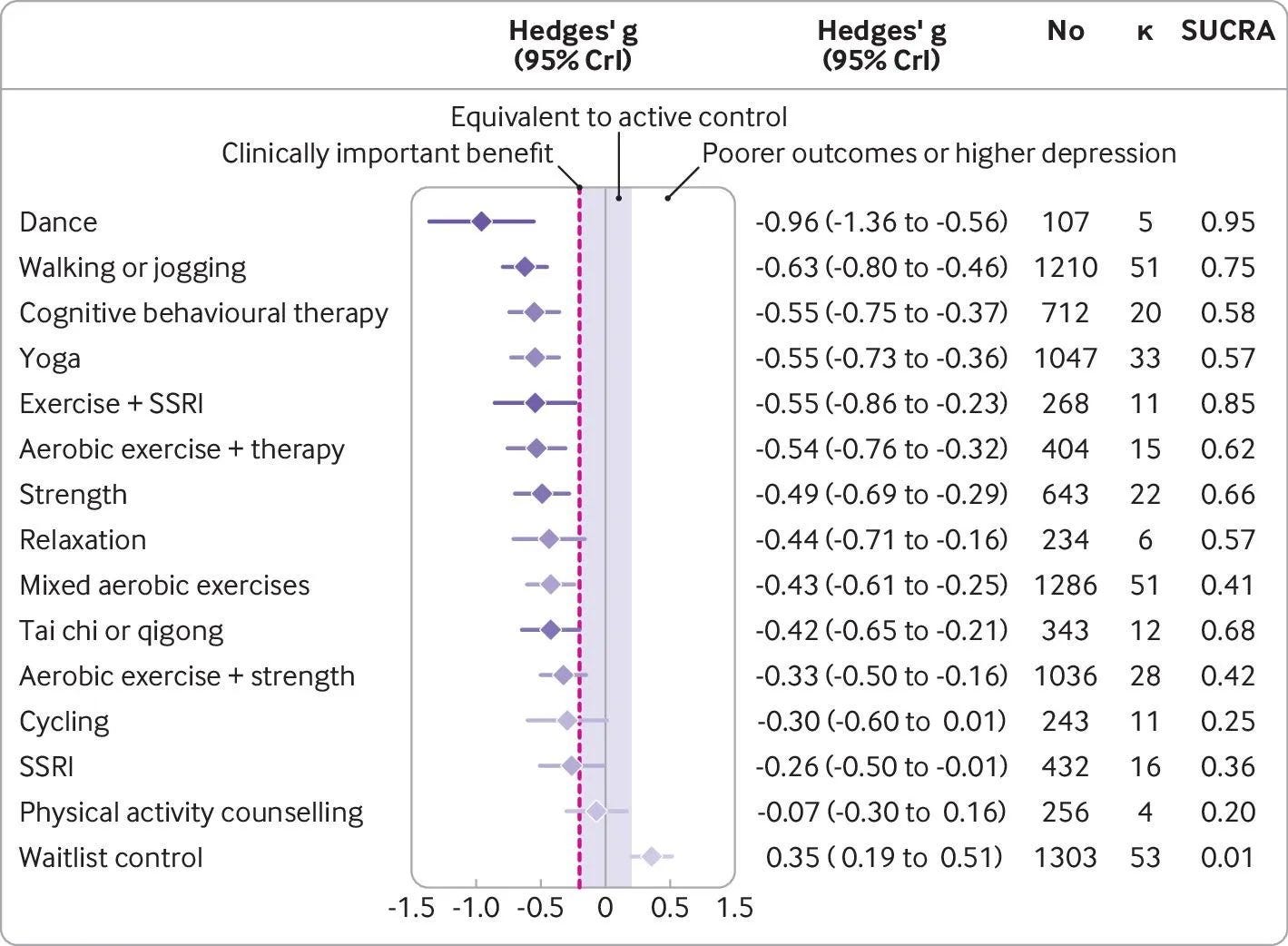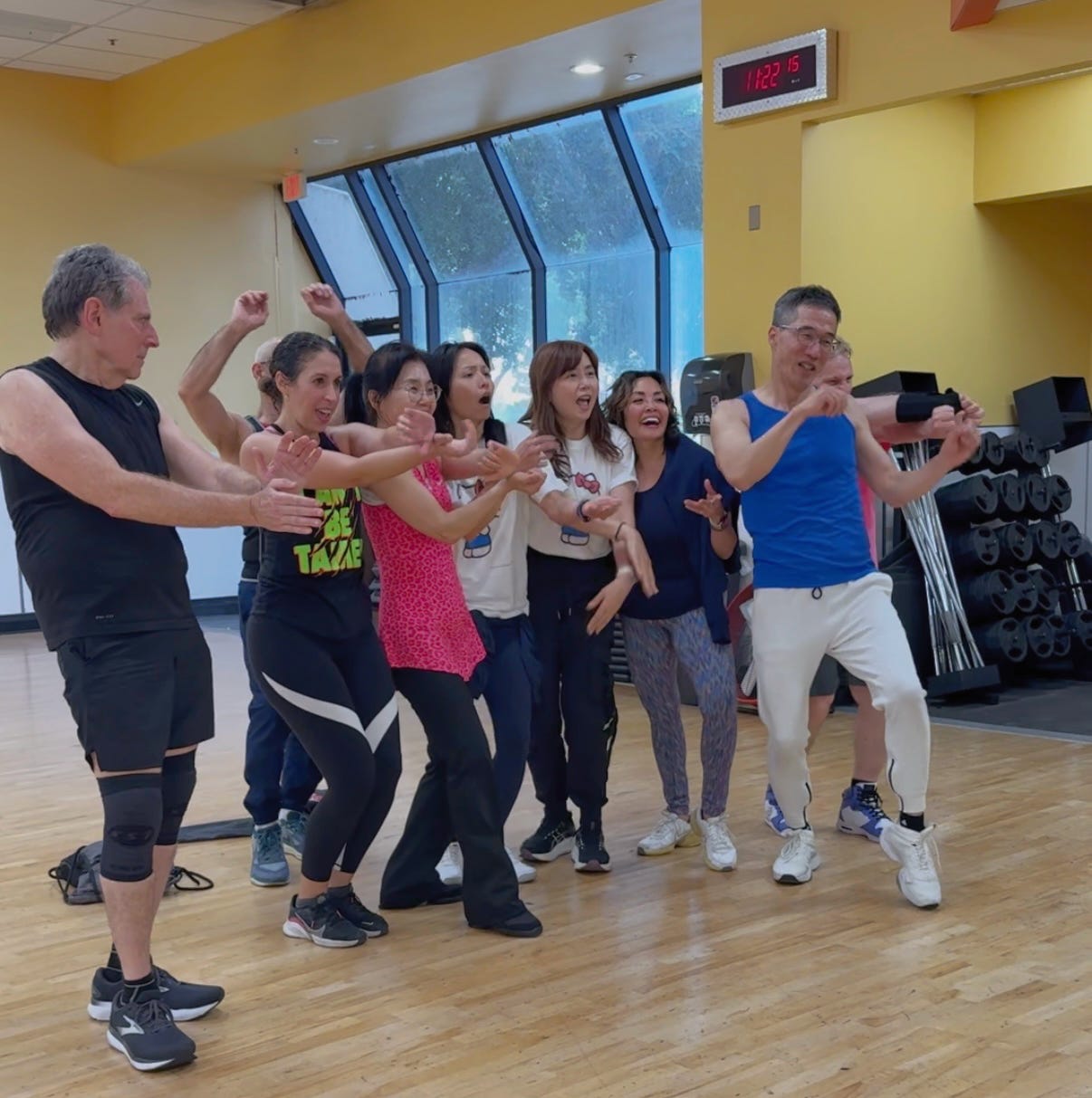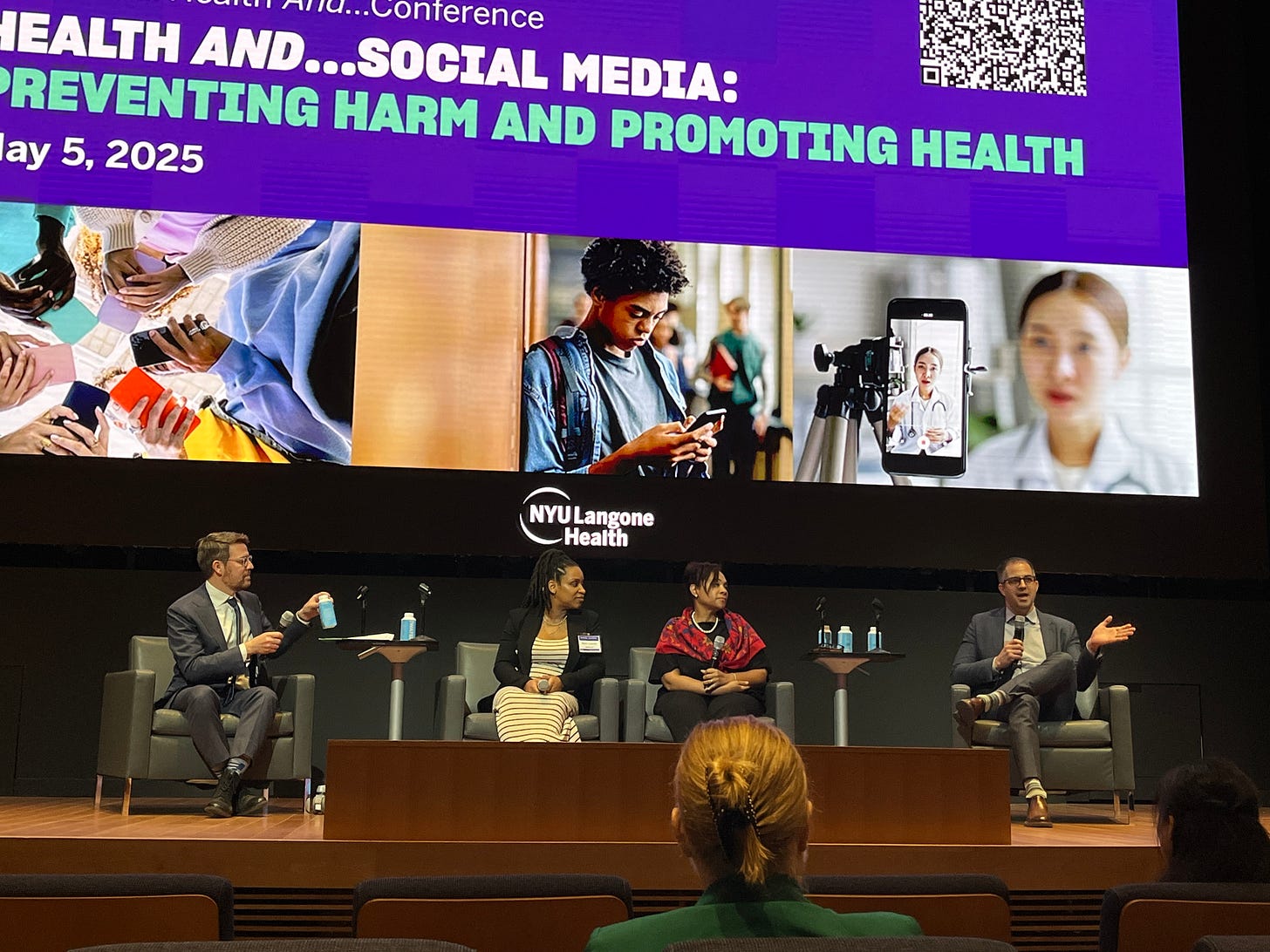Why dance classes are good for your mental health
Issue 166: Four key social psychological elements of healthy groups, as told through lived experiences in my Zumba class
Note: I would like to thank everyone who has examined the ideas and information I shared with a critical lens. Several individuals have pointed out that the meta-analysis cited below about the effect of exercise on depression has recieved solid criticism and there are doubts about the data quality and methods. Read more here. This thread includes comments from the lead author.
I don’t experience symptoms of major depression but if I did, I feel like going to my local gym’s Sunday afternoon Zumba class would probably cure me. I actually find myself tearing up while I dance sometimes, the positive energy in that room is just too powerful. And it turns out, I’m not alone.
A recent review/meta-analysis has been making the rounds on social media and reported that dancing was more effective in treating symptoms of depression compared to other forms of exercise and treatment.1
The study found that dancing as an intervention yielded the greatest reductions of symtoms of depression. It was more effective than jogging, yoga, cycling, weightlifting, and even cognitive behavioral therapy or anti-depressant drugs.
The study got me thinking about how joyful I feel while in Zumba class, and what aspects of the class might be the magic ingredients for reducing feelings of depression.

There are good biological reasons why dancing makes us feel good. Of course, movement is medicine—it burns calories, increases heart rate, and can improve muscle strength and tone. Dancing can also strengthen executive function and mind-body coordination. Research in psychology suggests that the act of dancing also leads to increased neurotransmitter activity in your brain, especially for serotonin.
Dancing is also fun, and people in my class know how to have fun. During class, one of the uncles hit the worm in the middle of the dance floor during a Electronic Dance Music track and he made everyone smile.
Aside from the dancing itself, my Zumba class is one of the healthiest groups I have ever been a part of. It’s really about the social aspects—I get teary-eyed while observing how people show up for themselves and each other, and feeling a sense of connectedness during group exercise. Below, I share some of the social psychological aspects of my class that make it a healthy, productive group—in the hopes that you can either join a similar class or apply these ideas into your own groups.
Setting Healthy Norms
At the beginning of each class, our instructor asks if there is anyone new and welcomes them. She’ll run up to them to say hello and give them a welcome high-five, then the entire class would clap for the new person. We are mostly comprised of regulars, so she lets newcomers know that they can take a water break anytime, and to modify the choreography if they have mobility restrictions. The first day of a group exercise class can be intimidating, but approaching newcomers like this lowers the stakes and creates a welcoming environment.
The instructor sets inclusive norms about group membership, and other learners in the class practice these same behaviors. People take care of each other, welcome newcomers, remind each other to drink water, and give high fives to their neighbors in between songs.
Fostering Psychological Safety
Norms aren’t just set by the instructor, since she always welcomes people to the front to dance beside her when “their song” comes on. Often, the people who join her are objectively stiff dancers, off-beat and/or don’t get all the moves right, even when it’s their favorite song. But messing up in front of classmates demonstrates to other people in the class that it’s okay to mess up. This creates psychological safety, and no one is shamed or embarrassed when this happens.
When someone’s song comes on and they excitedly run to the front, that’s where the magic happens. The dynamic changes when a student is at the front, and it’s a reminder that the class is interactive and the class belongs to all of us. To me, people who dance at the front for their favorite song feel so unapologetically themselves and unafraid of judgement—because no one in the class came to judge them. In a room lined with mirrors on two sides, no one seems to be concerned about their appearance or looking silly. Research on psychological safety has also shown that when employees feel a sense of psychological safety in their workplace, they are more likely to ask for feedback, be themselves and speak up.
When their song ends, everyone claps and celebrates them, which encourages others to follow suit. When one person demonstrates it’s okay to look silly, that makes it more okay for other people to look silly. I believe that all adults should be allowed to tap into their child-like whimsy for at minimum 1 hour and 15 minutes per week.
Inclusive Identity Leadership
I live in a diverse city, and that makes our class diverse on multiple dimensions: skill-level, gender, race/ethnicity, body type, age, mobility, fitness goals, etc. Our instructor learns and teaches new songs and choreography that honor those identities. Her rotating lists consist of American pop, Korean pop, Japanese pop, Desi pop, Latin pop, EDM, Jazz, Traditional vocal pop, R&B/Soul, and Country just to name a few. Some choreographies are very high energy for those who really want to burn calories, and others are more slow-paced.
She takes song requests and consults the class on what songs they would like to dance to, because this is not her class, it is our class!
This was not my experience at a different gym I went to a few years ago. That other instructor didn’t greet newcomers, only stuck to one genre of music and rarely changed the songs. The class was also more homogenous in gender, age and skill level. Needless to say, I didn’t feel very welcome and didn’t relate to anyone in the class.
Just freakin say “hi”
I always stand in the right corner of the room at about same spot during class. Lots of people also have “their spot”, and we get to know each other before and after class because of proximity. We always say hello and high-five each other in between songs and at the end of class.
We learn each other’s “spots" and notice when people are missing. When I don’t show up for two weeks because I’m traveling or sick, people in my corner ask me where I was and how I have been. I wouldn’t say that I’m friends with them, but they care about me and want to get to know me.
One of the easiest ways to help people feel seen and that they belong in a group is simply by saying hello. It can mean a lot. In fact, research finds that talking to strangers can make us happier. Lots of newcomers who join our class are unsure if dancing is for them or if this is a place where they can belong, but I have seen people quickly integrate into our group and have a great time—and it all starts with saying hello.
Each of these four elements of healthy groups can be applied to any group or team that you lead or are a part of. We have written about these topics in our newsletter for several years and truly believe in the power of these strategies for building healthy groups! For more on embracing diversity and setting new norms in groups, check our our previous articles.
News and Updates
Speaking of social connection and health, Jay gave a talk this week at NYU Langone Medical School as part of a conference on the health implications of social media. His discussed the potential health risks of disconnecting with real people and replacing it with social media (along with other health risks of social media, like the spread of misinformation). This is an issue that public health experts are taking very seriously and it was great to bring experts from multiple fields together to share insights.
We have contacted all of the winners of our book giveaway with Will Storr! If you missed it, don’t worry, we plan to give away more books in the future as we interview more authors.
Catch up on the last one…
Sometimes, conformity makes sense in decision making and is the smart thing to do. Last week, we revisited the Solomon Asch’s classic conformity studies with important added context.
Debunking The Myth That Conformity Is Irrational
In a classic moment of comedy history, the TV show Candid Camera had actors reveal the human tendency for conformity. You can see unsuspecting participants enter an elevator and quickly conform to a new set of rules—like facing the back or turn from side to side—as they observe the actions of others. It reveals, to great comic effect, the absurd degrees to we will mimic complete strangers.
Although the study found that dancing resulted in the largest reduction in symptoms of depression, study limitations prevent the researchers from reccommending dance more strongly. “The small number of studies, low number of participants, and biases in the study designs prohibits us from recommending dance more strongly. Given most research for the intervention has been in young women (88% female participants, mean age 31 years), it is also important for future research to assess the generalisability of the effects to different populations, using robust experimental designs,” they said. Further research should be conducted to evaluate the effectiveness of dancing as an intervention for depression.








I've read many comments about the emotional impact of dancing. It is difficult for me to believe any of them. The only emotion I connect with dancing is anxiety. I'll concede it's value as cardiovascular exercise not as therapy.